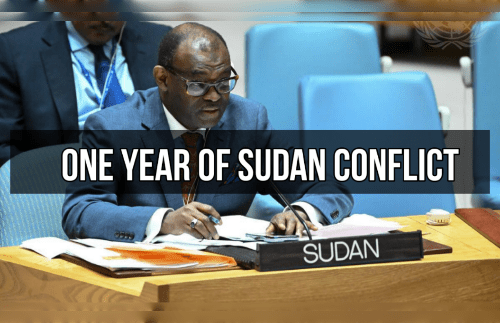In northeastern Congo, more than 600 people have fallen ill with the Ebola virus, and at least 368 people have died from the disease. It’s been difficult to contain the virus because of conflict in the region, despite medical advances, including a vaccine.
The Democratic Republic of Congo is where Ebola was first discovered in 1976, when the country was called Zaire. The disease was named after the Ebola River where the virus was spreading. Between then and 2013, there was no treatment or a vaccine. The outbreak ran its course in quarantined communities.
Scientists started studying the virus, however, trying to come up with better ways to handle its various deadly strains. They succeeded in producing a vaccine to help end the Ebola epidemic that swept through three West African countries between 2013 and 2016. More than 11,000 people died in that outbreak.
Treatment found

At that time, treatment for the Zaire strain of Ebola was developed. It was costly to produce and didn’t work on two other lethal strains, the Sudan and Bundibugyo viruses.
But now scientists have found one. Their research produced a drug cocktail called MBP134 that helped monkeys infected with three deadly strains of Ebola recover from the disease.
What’s more, the treatment requires a single intravenous injection.
Thomas Geisbert, Ph.D., led the research at the University of Texas Medical Branch, part of a public-private partnership that also included Mapp Biopharmaceuticals, the U.S. Army Research Institute of Infectious Diseases, and the Public Health Agency of Canada.
Must treat all strains
In an interview with VOA, Geisbert stressed the need for a treatment that would be effective against all strains of Ebola.
“When an outbreak occurs, we really don’t know which one of those three strains, species, we call them, is the cause of that particular episode,” Geisbert said.
He added that the treatments available have been effective only against the Zaire species, which leaves people infected with the other species unprotected.
“Our goal was to develop a treatment that would work regardless of the particular strain of Ebola that was causing it,” Geisbert said.
“If I have to make a drug that only works against Zaire, and another drug that only works against Sudan and another drug that only works against the Bundibugyo species, that is extremely expensive,” he added.
Geisbert said the treatment will save valuable time in determining which strain of Ebola is circulating in a particular outbreak. It will save lives because people can be treated immediately, and it will also save money.
No profit
There’s no profit for the pharmaceutical companies that produce the drugs.
“It’s not like you’re making up vaccine for flu where companies [are] going to make a profit. There’s really a small global market for Ebola so it really has to be sponsored by the government,” he said.
In addition to the U.S. Army and the Canadian government, the U.S. National Institutes of Health has supported much of this research.
Geisbert said the work ahead involves tweaking the dose to its lowest possible amount, making it easier to distribute — again to reduce costs — and conducting clinical trials in humans to ensure the treatment is safe and effective.
Geisbert is confident it will work in humans, although he cautioned that in science, nothing is certain.
The treatment may not be ready to help those with Ebola in the Congo outbreak, but the promise is that countries affected by the virus could have the treatment at the ready to stop future Ebola outbreaks.
It also means that should someone with Ebola walk into a hospital outside of Africa, as happened in Texas when a Liberian man sought treatment, the patient can be cured, and health care workers can be protected~VOA










